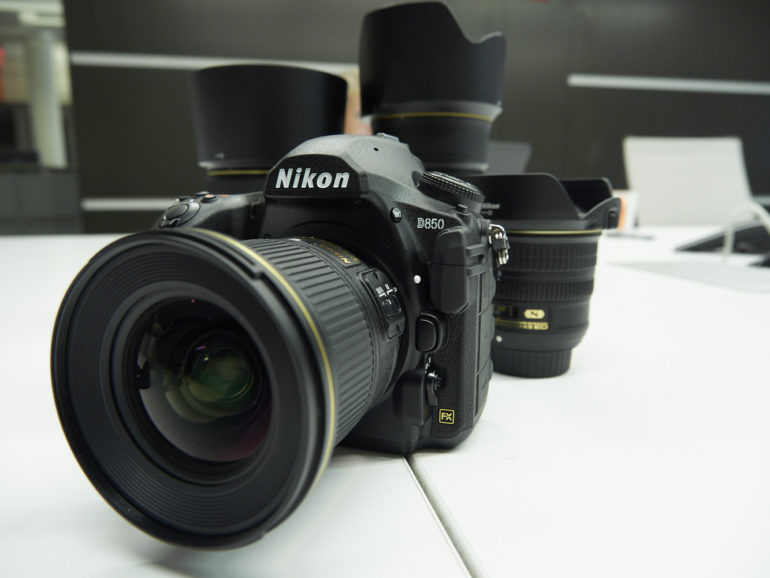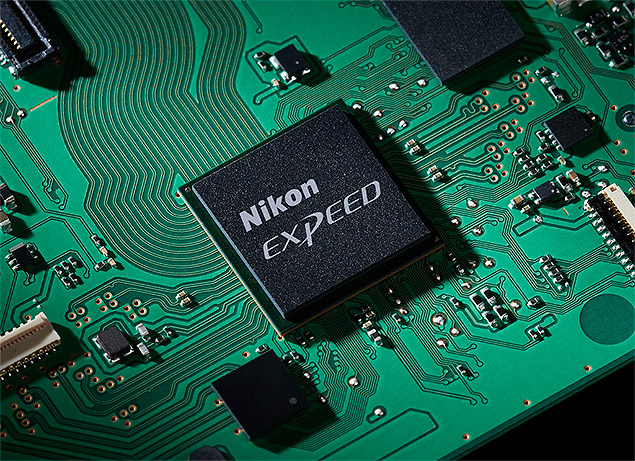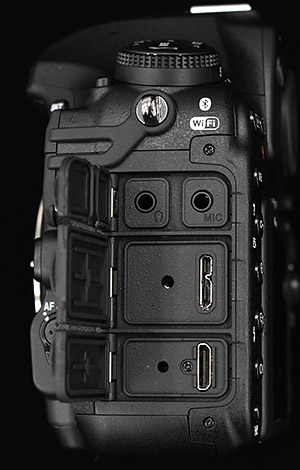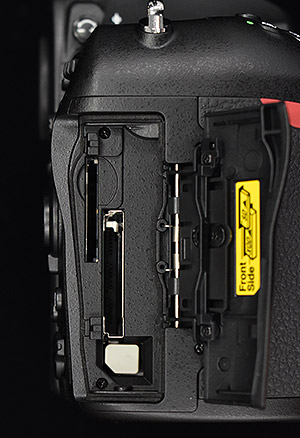NIKON D850 Announcement
- Thread starter jeff7id
- Start date
You are using an out of date browser. It may not display this or other websites correctly.
You should upgrade or use an alternative browser.
You should upgrade or use an alternative browser.
So.... will we get to see it on Sunday? ��
Where will you get to see D850 on Sunday ? Tokyo ?
Just for your info the RRP of the d810 is S$4888
Sent from my iPhone using Tapatalk
No sign of price drop ?
There's a Nikon Clubsnap event at Sentosa this Sunday. Now that they've announced it and shipping starts Sept, I was hoping it'd make an appearance this Sunday.Where will you get to see D850 on Sunday ? Tokyo ?
There's a Nikon Clubsnap event at Sentosa this Sunday. Now that they've announced it and shipping starts Sept, I was hoping it'd make an appearance this Sunday.
I doubt that we in singapore will be able to touch the camera so soon
Sent from my iPhone using Tapatalk
No sign of price drop ?
I'm sure the market forces will start churning soon
Sent from my iPhone using Tapatalk
First impression, the SOOC jpeg can be super high details and sharp with some tweaks onto picture control, depending on what you trying to shoot.
I managed to squeeze a very high dynamic range details into a single jpeg, with a tweaked flat profile at base ISO.
I managed to squeeze a very high dynamic range details into a single jpeg, with a tweaked flat profile at base ISO.
Exclusive Nikon D850 Product Q & A with Nikon Japan
Source: www.imaging-resource.com
Series of details and key insights into the major features and performance specs of Nikon's new pro high-res DSLR:
1) The D850 uses the same (excellent) AF system as the D5 and D500.
It includes the special, dedicated AF processor used in those cameras, that both handles the large number of AF points, and also provides the horsepower for the exceptional subject-tracking speed and ability seen with those cameras. (Many users and reviewers consider the D5's AF system to be the best in the business, period.)
2) Standard DX AF point coverage, in DX mode.
When shooting in DX mode, the D850's AF system has exactly the same coverage as it does on the D500.
3) Still only one AF fine-tune offset per lens.
When we asked whether the D850 would support different AF fine-tuning adjustments based on aperture (to handle lenses with spherical aberration, that shift their focus point slightly when stopped down) or for wide and tele focal lengths on a zoom, Nikon replied that they're aware of user requests in this area and are studying the feasibility, but it sounds like it won't be possible to add this capability to existing cameras via firmware updates.
4) The D850 supports focus peaking for both HD video and still photography.
It isn't available when shooting 4K video, though.
5) The Nikon D850 is primarily a stills camera, but Nikon greatly expanded its video capabilities over previous models.
The D850 has very strong features for video recording, but when we asked if they would be positioning the D850 as a go-to camera for primarily video users, they replied that they still consider still photography as the camera's main focus. They did very specifically want to cater to the increasing number of traditionally still shooters who are now also shooting video, though, so treated video recording as a very important use case. (We were interested to learn that dual still/video shooting by professionals is much more common in the US than in other parts of the world. We didn't ask, but are curious why that would be so much the case .)
6) 4K video with no horizontal cropping!
One significant feature of the D850 that we discussed with Nikon is its ability to shoot 4K video with no horizontal cropping. This is a big benefit for video shooters!
7) Electronic VR option available for Full HD, crops the frame slightly (unavoidable).
When recording Full HD video, the Nikon D850 offers the option of electronic vibration reduction. This is accomplished by using a bit less than the full sensor to create the video image. Then, if the camera moves slightly, the processor can simply shift the area that's being read out, to compensate. To make space on the sensor to do this, the camera will crop the frame slightly when electronic VR is enabled. Nikon didn't have a spec for us; we'll test and report on it when we get a test sample into our lab.
8) Reduced-resolution modes don't save buffer space, and actually reduce it and slow down buffer clearing.
(We're guessing this is true of all Nikon models, although we haven't tested it recently.) This was a bit of a surprise. We figured that the reduced-resolution modes wouldn't use as much buffer space, so you could get longer bursts when using them. It turns out that the buffer memory captures all the data coming from the sensor, and then the processor crunches it down before storing reduced-resolution data to the memory card. This means that there's no buffer-depth advantage with reduced-resolution modes, and it actually takes a bit longer for the processor to crunch the data before writing it to the card. (In fact, because the data is being cleared out of the buffer more slowly while shooting is going on, buffer capacity is actually somewhat reduced. -- Nikon said it was "only" 200 frames in DX mode :-0)
9) WOW, XQD cards can clear the buffer fast!
Given the huge buffer size on the Nikon D850, we wondered how long it would take to clear it to the memory card. The D850 supports the very fast XQD memory cards, so we asked how long it would take to clear the giant buffer when using one of them. After the necessary disclaimers that it depends on the speed of the particular card you're using, YMMV, etc, the Nikon engineers told us that they'd routinely seen the buffer clear to XQD cards in seven seconds(!) We'll obviously be checking this ourselves once we have a lab sample, but if true, this is really astonishingly quick, especially given the huge amount of data involved. Given its fast, capable AF system and this incredible clearing speed, the D850 looks to us like a serious option for sports shooters!
10) The new internal NEF-to-JPEG batch processing option is *fast*!
Nikon D850 Review -- Product Image A new feature in the D850 is the ability to select a large batch of NEF RAW files, select the various tweaks and adjustments you want to make to all of them, and then have the camera convert them to JPEGs itself. Because it can use the camera's dedicated image processor to do so, it can do this many times faster than even a very capable desktop computer. Nikon advertised this as being "17x faster" than PC-based NEF conversion, but that begged the question of 17x faster than exactly what computer, with what software. We asked how long these conversions actually took, in terms of clock time. The answer was that 1000 images took 25 minutes to convert. Hmm, OK, 25 minutes sounds like a while, but doing the math, we realized that this amounted to only 1.5 seconds per image - that's seriously fast (!)
(A side note: We thought this might encourage more sports shooters to also shoot RAW format, but it turns out the Nikon engineers were thinking mainly of time-lapse users when they created the feature.)
11) The Nikon D850 uses a backside-illuminated (BSI) sensor, but not for the reason you might think.
The D850 uses the first backside-illuminated sensor in Nikon's DSLR lineup, but when we asked about it, it turned out the reason wasn't to provide better low-light performance (its pixels are big enough that there's not much gain in ISO speed by moving the wiring to the back of the chip), but rather to give more flexibility in the chip's wiring, to achieve the high speed they were after. Interesting...
12) The Nikon D850 should be a significant step up, in terms of high-ISO noise and image quality.
While they didn't attribute it to the BSI sensor, Nikon told us that the D850 should produce the same image quality (both JPEG and RAW) at twice the ISOs as the D810, a full-stop improvement. That is, the D850 at its top "native" ISO of 25,600 should deliver the same image quality as the D810 did at ISO 12,800. If true, that's a pretty significant improvement; we can't wait to get our hands on a sample to check it out!
13) Nikon designed the D850 sensor themselves.
While Nikon contracts with a silicon foundry to actually manufacture the chips, Nikon confirmed that the D850's sensor is entirely their own design, vs. an off-the-shelf unit from a sensor manufacturer.
14) Nikon says dynamic range will be as good or better than that of the D810, despite the higher pixel count.
They've stated that there is no trade-offs to be made in balancing dynamic range at base ISO vs. higher ISOs, and that this sensor resolution represents the optimum balance for performance and image quality.
15) Adding the optional battery grip boosts the maximum shooting speed by 2 frames/second.
Nikon reports a change in voltage which allows an increase in overall shooting speed, allowing the shutter and mirror to move faster.
16) Focus-shift mode for bug photography
Based on demand from macro and insect photographers, the D850 now has a special focus shift mode. This directs the camera to shoot a number of images, shifting focus slightly between each one. The camera can't "stack" these itself, but it's easy to use focus-stacking software on your computer once the necessary shots are all captured. Talking to the engineers, some of them had apparently admired the ultra-closeup focus-stacked bug pictures seen around the internet, so just decided to build this feature into the camera. This was interesting to us, to think that the engineers just said "hey, this is such a cool effect -- let's help people do this!" -- rather than a more "corporate" approach of looking at market segments, holding focus groups, etc, etc. It seemed like a cool thing, wasn't hard to implement, so they just went ahead and built it into the camera.
17) Focus-shift settings decoded!
Because focus and depth of field depends on the lens you're using and the distance to the subject, it's often confusing how large a step you should specify between shots, when using a feature like the D850's focus shift option to capture images for use in focus stacking. In the case of the D850, you can choose a number from 1 to 10, and we asked the Nikon engineers what those units corresponded to. The answer was that the finest gradation (a setting of 1) equates to a focus step equal to the lens focal length divided by 30. So with a 100mm lens, the smallest step would be a distance of 3.3mm, and the largest one 30mm.
18) Same gorgeous tilting touch screen monitor as the D500.
19) Electronic first-curtain option used in "Quiet Shutter mode," without requiring mirror lockup.
:thumbsup::thumbsup::thumbsup:
Source: www.imaging-resource.com
Series of details and key insights into the major features and performance specs of Nikon's new pro high-res DSLR:
1) The D850 uses the same (excellent) AF system as the D5 and D500.
It includes the special, dedicated AF processor used in those cameras, that both handles the large number of AF points, and also provides the horsepower for the exceptional subject-tracking speed and ability seen with those cameras. (Many users and reviewers consider the D5's AF system to be the best in the business, period.)
2) Standard DX AF point coverage, in DX mode.
When shooting in DX mode, the D850's AF system has exactly the same coverage as it does on the D500.
3) Still only one AF fine-tune offset per lens.
When we asked whether the D850 would support different AF fine-tuning adjustments based on aperture (to handle lenses with spherical aberration, that shift their focus point slightly when stopped down) or for wide and tele focal lengths on a zoom, Nikon replied that they're aware of user requests in this area and are studying the feasibility, but it sounds like it won't be possible to add this capability to existing cameras via firmware updates.
4) The D850 supports focus peaking for both HD video and still photography.
It isn't available when shooting 4K video, though.
5) The Nikon D850 is primarily a stills camera, but Nikon greatly expanded its video capabilities over previous models.
The D850 has very strong features for video recording, but when we asked if they would be positioning the D850 as a go-to camera for primarily video users, they replied that they still consider still photography as the camera's main focus. They did very specifically want to cater to the increasing number of traditionally still shooters who are now also shooting video, though, so treated video recording as a very important use case. (We were interested to learn that dual still/video shooting by professionals is much more common in the US than in other parts of the world. We didn't ask, but are curious why that would be so much the case .)
6) 4K video with no horizontal cropping!
One significant feature of the D850 that we discussed with Nikon is its ability to shoot 4K video with no horizontal cropping. This is a big benefit for video shooters!
7) Electronic VR option available for Full HD, crops the frame slightly (unavoidable).
When recording Full HD video, the Nikon D850 offers the option of electronic vibration reduction. This is accomplished by using a bit less than the full sensor to create the video image. Then, if the camera moves slightly, the processor can simply shift the area that's being read out, to compensate. To make space on the sensor to do this, the camera will crop the frame slightly when electronic VR is enabled. Nikon didn't have a spec for us; we'll test and report on it when we get a test sample into our lab.
8) Reduced-resolution modes don't save buffer space, and actually reduce it and slow down buffer clearing.
(We're guessing this is true of all Nikon models, although we haven't tested it recently.) This was a bit of a surprise. We figured that the reduced-resolution modes wouldn't use as much buffer space, so you could get longer bursts when using them. It turns out that the buffer memory captures all the data coming from the sensor, and then the processor crunches it down before storing reduced-resolution data to the memory card. This means that there's no buffer-depth advantage with reduced-resolution modes, and it actually takes a bit longer for the processor to crunch the data before writing it to the card. (In fact, because the data is being cleared out of the buffer more slowly while shooting is going on, buffer capacity is actually somewhat reduced. -- Nikon said it was "only" 200 frames in DX mode :-0)
9) WOW, XQD cards can clear the buffer fast!
Given the huge buffer size on the Nikon D850, we wondered how long it would take to clear it to the memory card. The D850 supports the very fast XQD memory cards, so we asked how long it would take to clear the giant buffer when using one of them. After the necessary disclaimers that it depends on the speed of the particular card you're using, YMMV, etc, the Nikon engineers told us that they'd routinely seen the buffer clear to XQD cards in seven seconds(!) We'll obviously be checking this ourselves once we have a lab sample, but if true, this is really astonishingly quick, especially given the huge amount of data involved. Given its fast, capable AF system and this incredible clearing speed, the D850 looks to us like a serious option for sports shooters!
10) The new internal NEF-to-JPEG batch processing option is *fast*!
Nikon D850 Review -- Product Image A new feature in the D850 is the ability to select a large batch of NEF RAW files, select the various tweaks and adjustments you want to make to all of them, and then have the camera convert them to JPEGs itself. Because it can use the camera's dedicated image processor to do so, it can do this many times faster than even a very capable desktop computer. Nikon advertised this as being "17x faster" than PC-based NEF conversion, but that begged the question of 17x faster than exactly what computer, with what software. We asked how long these conversions actually took, in terms of clock time. The answer was that 1000 images took 25 minutes to convert. Hmm, OK, 25 minutes sounds like a while, but doing the math, we realized that this amounted to only 1.5 seconds per image - that's seriously fast (!)
(A side note: We thought this might encourage more sports shooters to also shoot RAW format, but it turns out the Nikon engineers were thinking mainly of time-lapse users when they created the feature.)
11) The Nikon D850 uses a backside-illuminated (BSI) sensor, but not for the reason you might think.
The D850 uses the first backside-illuminated sensor in Nikon's DSLR lineup, but when we asked about it, it turned out the reason wasn't to provide better low-light performance (its pixels are big enough that there's not much gain in ISO speed by moving the wiring to the back of the chip), but rather to give more flexibility in the chip's wiring, to achieve the high speed they were after. Interesting...
12) The Nikon D850 should be a significant step up, in terms of high-ISO noise and image quality.
While they didn't attribute it to the BSI sensor, Nikon told us that the D850 should produce the same image quality (both JPEG and RAW) at twice the ISOs as the D810, a full-stop improvement. That is, the D850 at its top "native" ISO of 25,600 should deliver the same image quality as the D810 did at ISO 12,800. If true, that's a pretty significant improvement; we can't wait to get our hands on a sample to check it out!
13) Nikon designed the D850 sensor themselves.
While Nikon contracts with a silicon foundry to actually manufacture the chips, Nikon confirmed that the D850's sensor is entirely their own design, vs. an off-the-shelf unit from a sensor manufacturer.
14) Nikon says dynamic range will be as good or better than that of the D810, despite the higher pixel count.
They've stated that there is no trade-offs to be made in balancing dynamic range at base ISO vs. higher ISOs, and that this sensor resolution represents the optimum balance for performance and image quality.
15) Adding the optional battery grip boosts the maximum shooting speed by 2 frames/second.
Nikon reports a change in voltage which allows an increase in overall shooting speed, allowing the shutter and mirror to move faster.
16) Focus-shift mode for bug photography
Based on demand from macro and insect photographers, the D850 now has a special focus shift mode. This directs the camera to shoot a number of images, shifting focus slightly between each one. The camera can't "stack" these itself, but it's easy to use focus-stacking software on your computer once the necessary shots are all captured. Talking to the engineers, some of them had apparently admired the ultra-closeup focus-stacked bug pictures seen around the internet, so just decided to build this feature into the camera. This was interesting to us, to think that the engineers just said "hey, this is such a cool effect -- let's help people do this!" -- rather than a more "corporate" approach of looking at market segments, holding focus groups, etc, etc. It seemed like a cool thing, wasn't hard to implement, so they just went ahead and built it into the camera.
17) Focus-shift settings decoded!
Because focus and depth of field depends on the lens you're using and the distance to the subject, it's often confusing how large a step you should specify between shots, when using a feature like the D850's focus shift option to capture images for use in focus stacking. In the case of the D850, you can choose a number from 1 to 10, and we asked the Nikon engineers what those units corresponded to. The answer was that the finest gradation (a setting of 1) equates to a focus step equal to the lens focal length divided by 30. So with a 100mm lens, the smallest step would be a distance of 3.3mm, and the largest one 30mm.
18) Same gorgeous tilting touch screen monitor as the D500.
19) Electronic first-curtain option used in "Quiet Shutter mode," without requiring mirror lockup.
:thumbsup::thumbsup::thumbsup:
Last edited:
The D850 is proof Nikon is finally taking video seriously
Source: www.imaging-resource.com
Here are the Nikon D850's video features:
Full video specs:
4K UHD 3,840x2,160 / 30 fps @ 144Mbps
4K UHD 3,840x2,160 / 25 fps @ 144Mbps
4K UHD 3,840x2,160 / 24 fps @ 144Mbps
Full HD 1,920x1,080 / 60 fps @ 48 Mbps
Full HD 1,920x1,080 / 50 fps @ 48 Mbps
Full HD 1,920x1,080 / 30 fps @ 24 Mbps
Full HD 1,920x1,080 / 25 fps @ 24 Mbps
Full HD 1,920x1,080 / 24 fps @ 24 Mbps
HD 1,280x720 / 60 fps @ 24 Mbps
HD 1,280x720 / 50 fps @ 24 Mbps
Slow-motion: Full HD 1,920x1,080 30p (x4) @ 36 Mbps
Slow-motion: Full HD 1,920x1,080 25p (x4) @ 36 Mbps
Slow-motion: Full HD 1,920x1,080 24p (x5) @ 29 Mbps
Actual frame rates for 60p, 50p, 30p, 25p, and 24p are 59.94, 50, 29.97, 25, and 23.976 fps, respectively.
Exciting features on Nikon's new pro full-frame DSLR
:thumbsup::thumbsup::thumbsup:
Source: www.imaging-resource.com
Here are the Nikon D850's video features:
- Full-frame 4K UHD: at 24/30 fps
- Slow Motion: Full HD 1080p at up to 120 fps (4x or 5x)
- Focus Peaking: When shooting Full HD or in Live View for stills, focus peaking can be enabled which highlights in-focus subjects in the frame to ensure sharpness.
- 8K / 4K Time-lapse: Create 4K UHD time-lapse videos easily in-camera, or can use the built in intervalometer to capture images for an ultra-high resolution 8K time lapse that can be assembled in post.
- Zebra stripes: The D850's highlight display mode uses zebra patterns to quickly spot overblown highlights. It is available in two varieties, selectable according to the patterns and textures of the subjects.
- HDMI output: Record uncompressed, broadcast quality 4:2:2 8-bit 4K UHD footage, directly to an external digital recorder while simultaneously recording to a card.
- Audio Control: The D850 features an onboard stereo microphone, as well as inputs for headphones and microphone. The camera also features a new audio attenuator to regulate sound levels.
- Dual card slots: XQD and SD UHS-II
- Tilting LCD Touchscreen: 3.2-inch, high resolution (2,359k-dot) LCD monitor.
- EXPEED 5: New processor allows for full-frame 4K UHD video capture and greater power efficiency for longer battery life.
Full video specs:
4K UHD 3,840x2,160 / 30 fps @ 144Mbps
4K UHD 3,840x2,160 / 25 fps @ 144Mbps
4K UHD 3,840x2,160 / 24 fps @ 144Mbps
Full HD 1,920x1,080 / 60 fps @ 48 Mbps
Full HD 1,920x1,080 / 50 fps @ 48 Mbps
Full HD 1,920x1,080 / 30 fps @ 24 Mbps
Full HD 1,920x1,080 / 25 fps @ 24 Mbps
Full HD 1,920x1,080 / 24 fps @ 24 Mbps
HD 1,280x720 / 60 fps @ 24 Mbps
HD 1,280x720 / 50 fps @ 24 Mbps
Slow-motion: Full HD 1,920x1,080 30p (x4) @ 36 Mbps
Slow-motion: Full HD 1,920x1,080 25p (x4) @ 36 Mbps
Slow-motion: Full HD 1,920x1,080 24p (x5) @ 29 Mbps
Actual frame rates for 60p, 50p, 30p, 25p, and 24p are 59.94, 50, 29.97, 25, and 23.976 fps, respectively.
- Format: Recorded in MOV or MP4, H.264/MPEG-4 Advanced Video Coding
- Maximum recording time: 29 minutes 59 seconds. Each movie will be recorded across up to 8 files of up to 4 GB each. The number of files and the length of each file vary with the options selected for Frame size/frame rate and Movie quality.
- Live View Autofocus: Contrast-detect AF anywhere in frame (camera selects focus point automatically when face-priority AF or subject-tracking AF is selected).
Exciting features on Nikon's new pro full-frame DSLR
- Focus Peaking on a DSLR
- True Full Frame 4K
- Full HD, true slow motion
- Built-In Timelapse
- The clean HDMI out at 4:2:2 8-bit is nice to see, especially since the D850 can record in-camera as well as to an external recorder simultaneously. For those looking for the best quality the camera can offer, this is pretty darn good.
- Both a headphone and mic jack together is of course a must-have, and Nikon delivered.
- A tilting screen is always welcome, and it being touch-capable as well is great.
- Zebra striping for exposure is a big plus, and many video shooters can't imagine using a camera that doesn't have this feature.
:thumbsup::thumbsup::thumbsup:
Nikon D850 Key Features
Source: www.imaging-resource.com
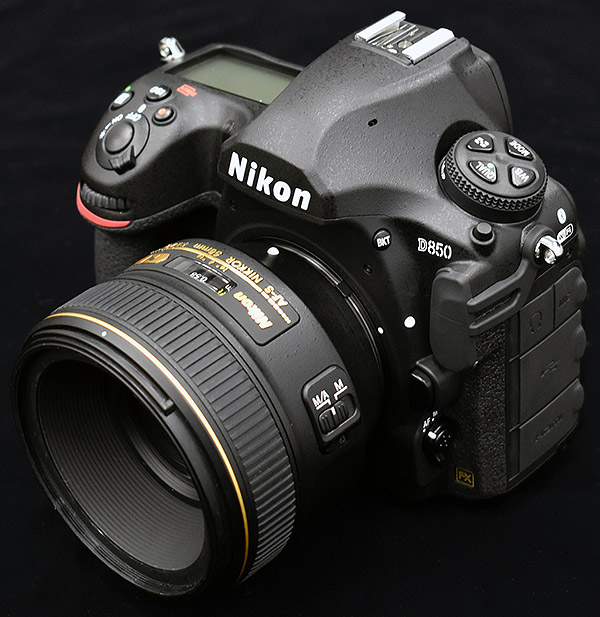
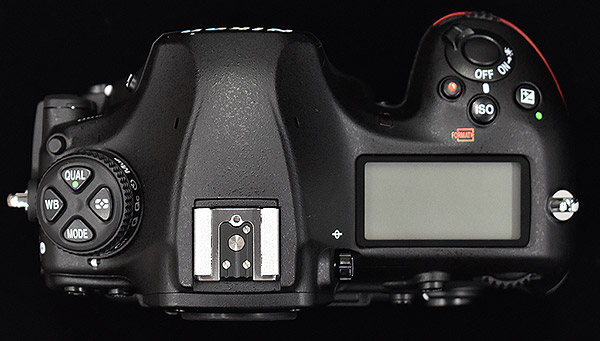
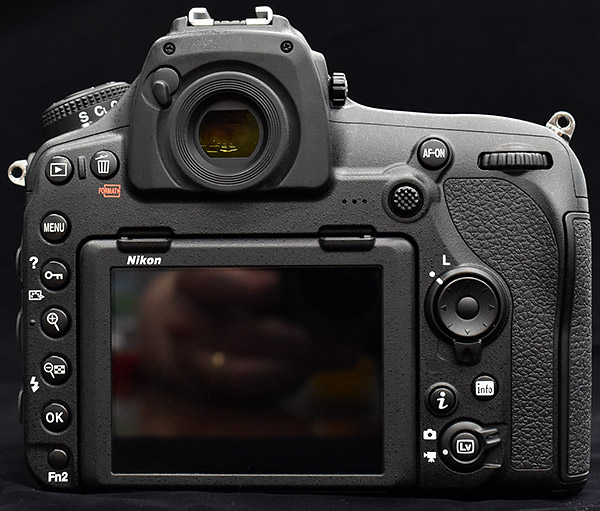
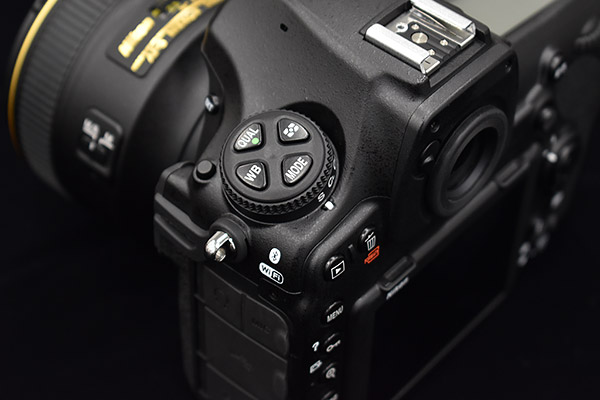
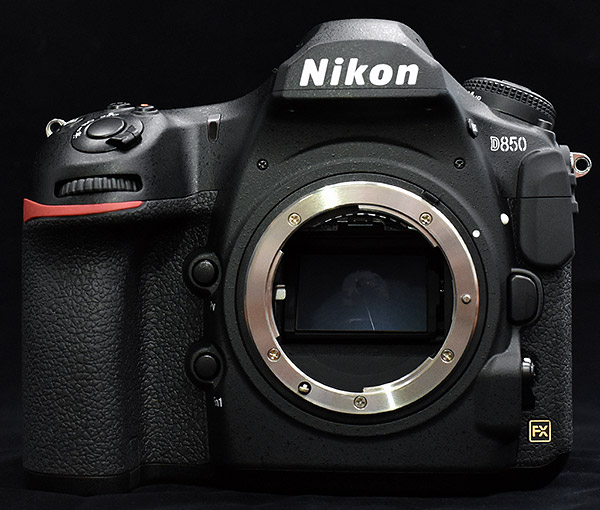
Source: www.imaging-resource.com
- Weather-sealed magnesium alloy body with 200,000 cycle shutter
- Tilting 3.2-inch high-res touchscreen
- Touch operation for all menus
- Nikon's biggest optical viewfinder ever
- Dual card slots, including one XQD and one SD card slot
- Illuminated buttons
- New backside-illuminated 45.7 megapixel full-frame sensor without optical low pass filter (OLPF)
- Native ISO range of 64 - 25,600, expandable down to ISO 32 and up to ISO 102,400
- The same 153-point autofocus system as the Nikon D5 and D500
- EXPEED 5 image processor
- Up to 7 frames per second full-res continuous shooting (9 fps with the optional battery grip)
- Focus-shift mode for up to 300 shots
- 8K time lapse
- Full-frame 4K UHD video recording at up to 30 frames per second
- Slow motion Full HD video at up to 120 fps
- Focus peaking when recording Full HD and using Live View
- HDMI output for 4:2:2 8-bit 4K UHD footage and simultaneous internal and external recording
- Built-in Wi-Fi and Bluetooth for Nikon SnapBridge compatibility





The Nikon D850 can scan film using the new ES-2 digitizing adapter
The ES-2 is a Film Digitizing Adapter that lets you easily convert your film images to digital. Taking advantage of the high-pixel count of the D850's 45.7 MP, the Film Digitizing Adapter lets you convert both 35mm slides and negatives to digital files. Using a lens such as the AF-S Micro NIKKOR 60mm f/2.8G ED attached to the D850, the camera's digitizing function automatically reverses the colors and stores them as JPEG images. This once time-consuming process involving a film scanner can be done much more quickly. For negative strips, use the FH-4 Strip Film Holder with the ES-2 and for slides, use the FH-5 Slide Mount Holder with the ES-2.
The ES-2 is available for pre-order on the Nikon website.
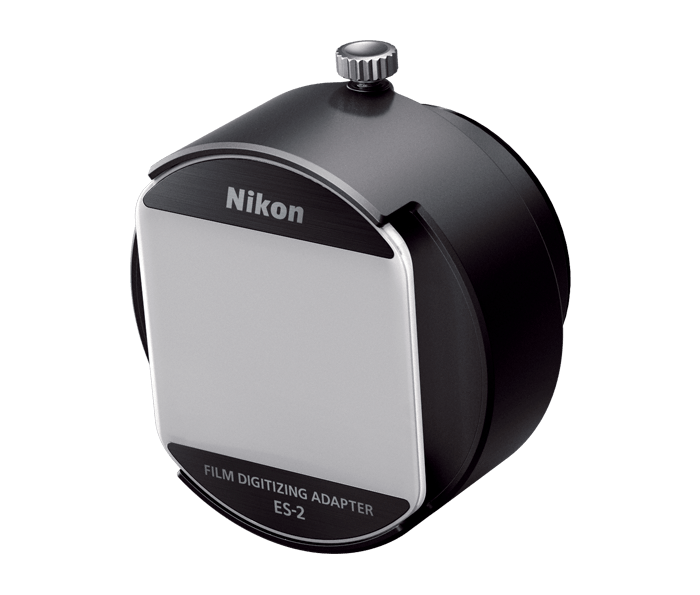
The FH-4 is available for pre-order on the Nikon website.
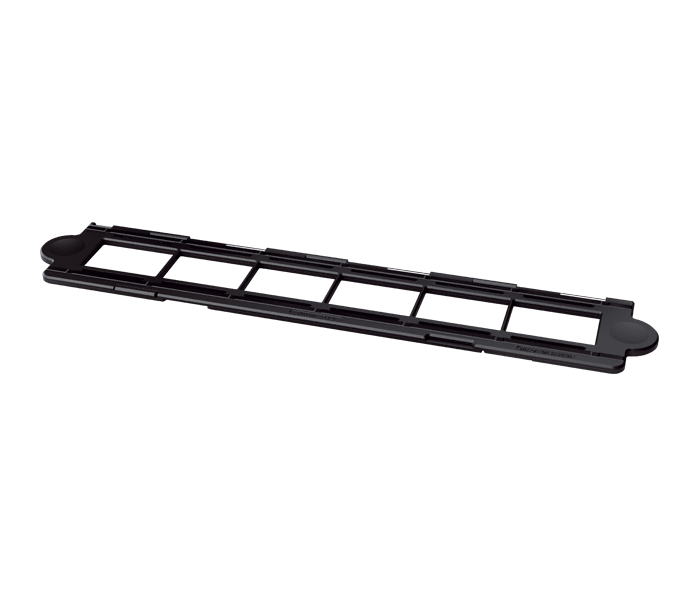
The FH-5 is available for pre-order on the Nikon website.
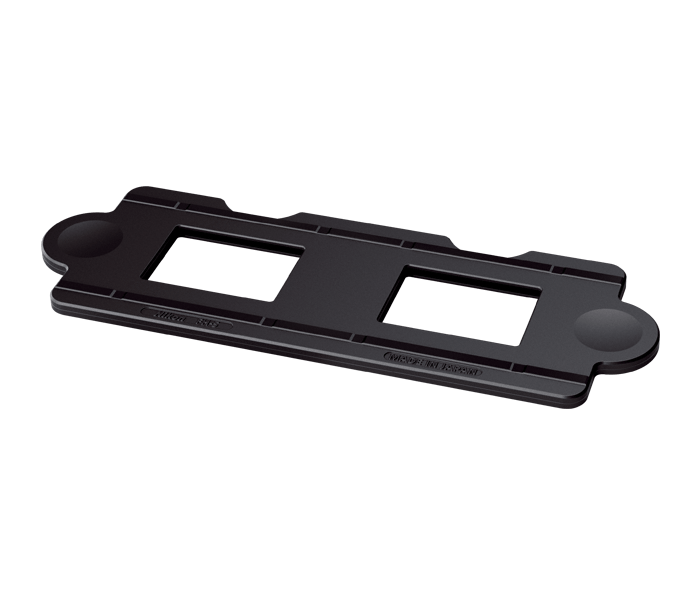
The ES-2 is a Film Digitizing Adapter that lets you easily convert your film images to digital. Taking advantage of the high-pixel count of the D850's 45.7 MP, the Film Digitizing Adapter lets you convert both 35mm slides and negatives to digital files. Using a lens such as the AF-S Micro NIKKOR 60mm f/2.8G ED attached to the D850, the camera's digitizing function automatically reverses the colors and stores them as JPEG images. This once time-consuming process involving a film scanner can be done much more quickly. For negative strips, use the FH-4 Strip Film Holder with the ES-2 and for slides, use the FH-5 Slide Mount Holder with the ES-2.
The ES-2 is available for pre-order on the Nikon website.

The FH-4 is available for pre-order on the Nikon website.

The FH-5 is available for pre-order on the Nikon website.

Last edited:
Looks a like a worthy upgrade even from the D810 (although the D810 is still a worthy camera).
Now to figure out the RRP for Singapore - and how fast the backlog clears!
Now to figure out the RRP for Singapore - and how fast the backlog clears!
Looks a like a worthy upgrade even from the D810 (although the D810 is still a worthy camera).
Now to figure out the RRP for Singapore - and how fast the backlog clears!
YES, it is worth upgrading from D810 to D850
Source: www.imaging-resource.com
Nikon D810 has 1 advantage over Nikon D850
- INTERNAL FLASH INTERNAL FLASH vs NONE
Useful in a pinch for fill flash, which I do not miss it at all.
But Nikon D850 has 17 advantages over Nikon D810
- FOCUS PEAKING PEAKER vs NON-PEAKER
Your camera will highlight what's in focus - SHOOT 4K VIDEO 4K (UHD) vs 1080P
Make sure you have a fast computer - TOUCHSCREEN TOUCH vs NO TOUCH
Interact with your camera just like your smartphone - TILTABLE SCREEN TILTABLE vs FIXED
Tilt the screen for shooting flexbility - BUILT-IN WI-FI WI-FI vs NONE
Share your photos wirelessly - BUILT-IN BLUETOOTH YES vs NO
Always-on wireless connectivity - LONGER STILLS BATTERY LIFE MORE INFO 1840 vs 1200 SHOTS
Capture more photos - MORE CROSS-TYPE AF POINTS 99 vs 15
Cross-type AF points improve autofocus performance - NEWER BRAND NEW vs 3 YEARS OLD
Newer cameras often support more advanced features - HIGHER-RES SCREEN 590K vs 307K PIXELS
More detail on the screen lets you judge focus and composition - MORE PIXELS 45.7 vs 36.3 MEGAPIXELS
Higher resolution photos - MORE AF POINTS 153 vs 51
More AF points improve autofocus - FASTER JPEG SHOOTING 7.0 FPS vs 5.1 FPS
Faster JPEG shooting (burst mode) - FASTER RAW SHOOTING 7.0 FPS vs 5.1 FPS
Faster RAW shooting in burst mode - BIGGER RAW BUFFER 51 vs 23 SHOTS
Larger buffer for RAW shots (burst mode) - SLOW-MOTION VIDEOS YES vs NO
Shoot slow-motion videos - HIGHER EXTENDED ISO 102400 vs 51200 ISO
Higher extended ISO can give more low-light flexibility
For those who like to read charts.
NIKON D5 vs D810 vs D850 Dynamic Range
Who is the Dynamic Range Champion for Low ISO (64-800) ?
Source:
www.photonstophotos.net
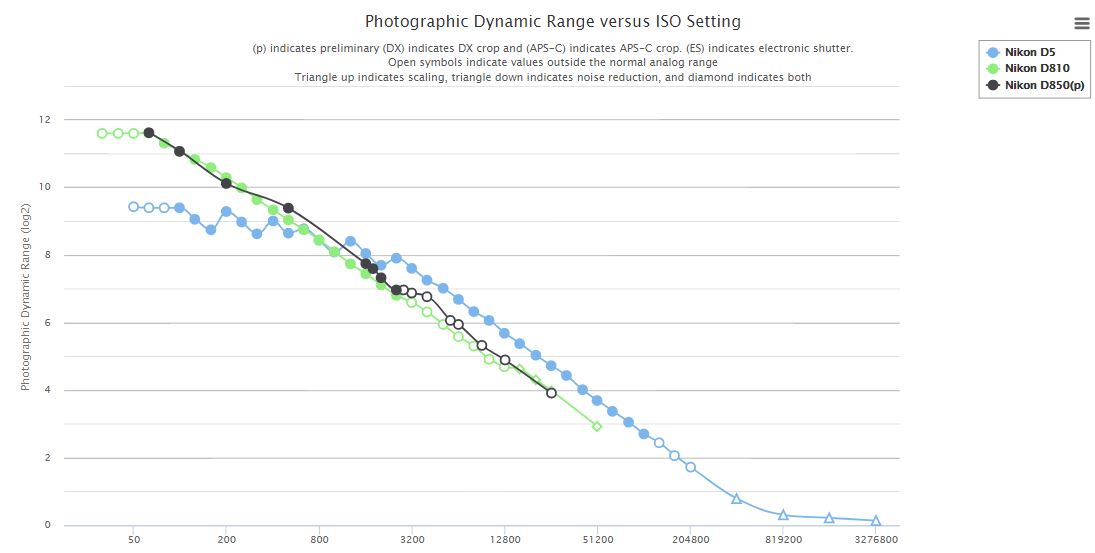
NIKON D5 vs D810 vs D850 Dynamic Range
Who is the Dynamic Range Champion for Low ISO (64-800) ?
Source:
www.photonstophotos.net

Similar threads
- Replies
- 0
- Views
- 58
- Replies
- 0
- Views
- 140
- Replies
- 1
- Views
- 411
- Replies
- 0
- Views
- 145
- Replies
- 0
- Views
- 217



